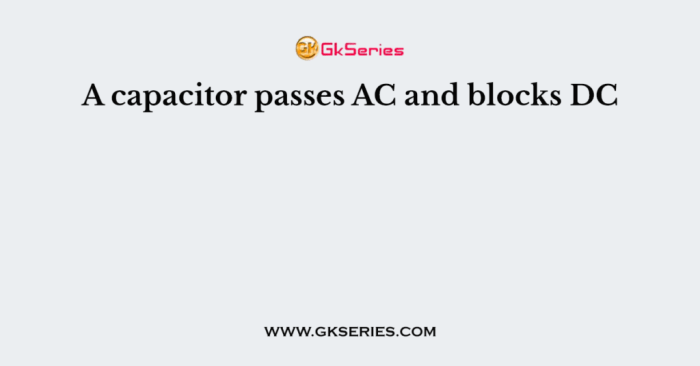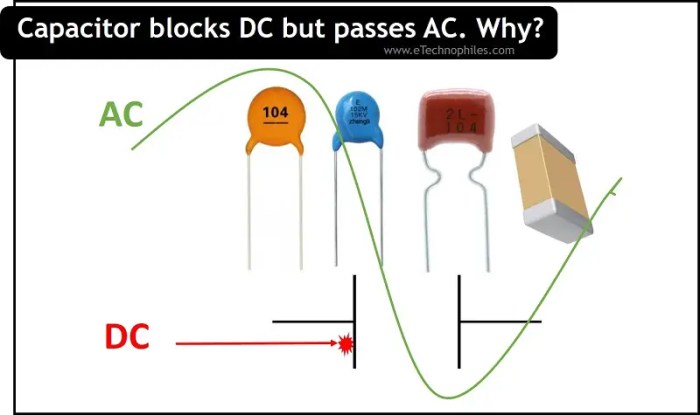A capacitor effectively dc and ac current through a circuit, making it an essential component in various electronic applications. This article delves into the fundamental principles of capacitor operation, exploring their behavior in both DC and AC circuits. We will examine how capacitors store and release electrical energy, impede AC current flow, and create phase shifts between voltage and current.
Capacitors come in various types, each with unique characteristics. Understanding these differences is crucial for selecting the right capacitor for specific applications. This article will provide insights into capacitor design considerations, troubleshooting techniques, and practical examples of their usage.
Capacitor Basics

Capacitors are passive electronic components that store electrical energy in an electric field. They consist of two conductive plates separated by an insulating material called a dielectric.
Capacitors are characterized by their capacitance, which is measured in farads (F). Capacitance represents the ability of a capacitor to store electrical charge.
Types of Capacitors
- Ceramic capacitors: Small, inexpensive, and suitable for high-frequency applications.
- Electrolytic capacitors: High capacitance but large size and limited lifespan.
- Film capacitors: Stable and reliable, often used in power supplies and audio circuits.
Capacitors in DC Circuits, A capacitor effectively dc and ac current through a circuit
In DC circuits, capacitors act as energy storage devices. When connected to a voltage source, they charge up by accumulating charge on their plates.
The capacitance of a capacitor determines the amount of charge it can store. A higher capacitance allows for more charge storage and a longer discharge time.
Capacitors in AC Circuits
In AC circuits, capacitors impede current flow by opposing changes in voltage. They create a phase shift between voltage and current, causing the current to lag behind the voltage.
The capacitance of a capacitor determines the amount of current it impedes. A higher capacitance results in a greater impedance to AC current.
Capacitor Applications
Capacitors have numerous applications in electronic circuits, including:
- Energy storage and filtering in power supplies
- Signal filtering and decoupling in audio and communication circuits
- Timing circuits and frequency selection in oscillators and resonant circuits
Capacitance Calculations
Capacitance is calculated using the following formula:
C = Q / V
where:
- C is capacitance in farads
- Q is charge in coulombs
- V is voltage in volts
Capacitor Design Considerations
When designing capacitors, the following factors must be considered:
- Voltage rating: The maximum voltage that the capacitor can withstand
- Temperature range: The operating temperature range of the capacitor
- Physical size: The size and shape of the capacitor
Capacitor Troubleshooting
Common capacitor failures include:
- Short circuits: A direct connection between the plates, resulting in a loss of capacitance
- Open circuits: A break in the connection between the plates, resulting in zero capacitance
- Leakage: A gradual loss of charge over time, resulting in reduced capacitance
Questions Often Asked: A Capacitor Effectively Dc And Ac Current Through A Circuit
What is the primary function of a capacitor?
Capacitors store electrical energy in an electric field and release it when needed, acting as a temporary reservoir of charge.
How do capacitors affect DC current flow?
In DC circuits, capacitors initially oppose current flow but eventually allow it to pass as they become fully charged.
What is the role of capacitors in AC circuits?
In AC circuits, capacitors impede current flow and introduce a phase shift between voltage and current due to their capacitive reactance.

